Tool Cutting

What tools do I need for basic home repairs ?
Basic Home Repairs Toolkit: Essential Tools for Common Household Tasks When it comes to basic home repairs, having the right tools is essential. Here are some of the most important tools you should have on hand for common household tasks: 1. Screwdrivers: Flathead and Phillips head screwdrivers for general use and assembling furniture. 2. Pliers: Needle-nose and slip-joint pliers for gripping and bending wires and cutting and gripping various materials. 3. Wrenches: Adjustable wrench and crescent wrench set for tightening and loosening nuts and bolts of various sizes. 4. Hammer: Claw hammer for driving nails and removing them from wood. 5. Tape Measure: Retractable tape measure for measuring distances and ensuring accuracy in cuts and installations. 6. Level: Torpedo level and carpenter's square for checking if objects are horizontally level and angles are square and true. 7. Handsaw: Hacksaw and keyhole saw for cutting through metal, plastic, or wood and making small, precise cuts in drywall or wood. 8. Drill/Driver: Cordless drill/driver with assorted drill bits and screw tips for drilling holes and driving screws into various materials. 9. Staple Gun: Manual staple gun for upholstery, fabric, and light duty fastening tasks, and electric staple gun for heavy-duty fastening tasks like installing flooring or ceiling tiles. 10. Utility Knife: Retractable utility knife for cutting open boxes, trimming materials, or scoring surfaces before snapping them apart. By having these basic tools on hand, you can tackle many common home repair projects with confidence and efficiency. Remember to keep your tools organized, clean, and properly maintained for safe and effective use.

How do I properly use a chef's knife in the kitchen ?
Using a chef's knife properly is essential for efficient and safe food preparation. Here are some tips on how to use a chef's knife correctly: Holding the Knife Correctly: Hold the handle firmly with your dominant hand, using a grip that feels comfortable and secure. Place your index finger and thumb on either side of the handle, with your other fingers curled around it. Keep your thumb tucked in towards the handle to avoid accidents. Chopping Technique: Maintain a slight angle (about 20 degrees) between the blade and the cutting board to make it easier to slice through tough ingredients. Use a rocking motion, pressing down on the blade at the end closest to the tip and then lifting at the handle end, to create a smooth chopping action. Slicing Technique: Start by drawing the blade back slightly before making the cut. As you push down on the blade, pull it towards you to make a long, even slice. Safety Tips: Sharpen your knife regularly as a sharp knife is safer than a dull one. Always keep your fingers out of the path of the blade to avoid accidents. Use a stable cutting board to protect your countertops and provide a safe surface for cutting. By following these guidelines, you can effectively and safely use a chef's knife in the kitchen. Remember to practice regularly to improve your skills and confidence with this versatile tool.
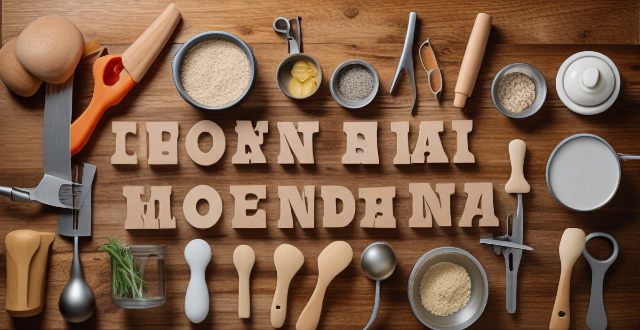
What are the essential kitchen tools every home cook should have ?
The text provides a list of essential kitchen tools that every home cook should have, including a chef's knife, cutting board, measuring cups and spoons, mixing bowls, saucepan, skillet/frying pan, baking sheet/roasting pan, whisk, wooden spoon or spatula, can opener, garlic press, grater, peeler, tongs, and colander/strainer. These tools are important for preparing meals and ensuring accurate measurements and successful cooking.
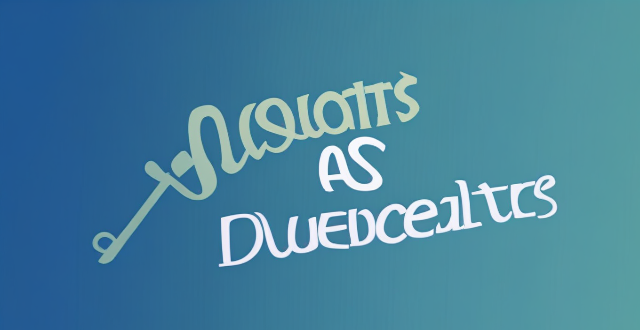
Can sports be used as a tool for conflict resolution and peacebuilding ?
The text discusses the potential of sports as a tool for conflict resolution and peacebuilding. It highlights the power of sports to break down barriers, promote equality, and build trust among individuals from different backgrounds, cultures, and beliefs. The text provides examples of how sports have been used in this context, such as the Olympics, Peace Teams International, and Soccer for Peace. It concludes that while sports alone cannot solve all conflicts or bring lasting peace, they can be a powerful tool in these efforts by creating a foundation for peace and understanding.

How important is an earthquake emergency kit, and what should it contain ?
The text discusses the importance of being prepared for earthquakes by having an emergency kit with essential items such as water, food, a first aid kit, light sources, clothing, bedding or shelter, tools, sanitation and personal needs, important documents, cash, communication tools, maps and information. It also mentions additional considerations like pet care and multi-tools.
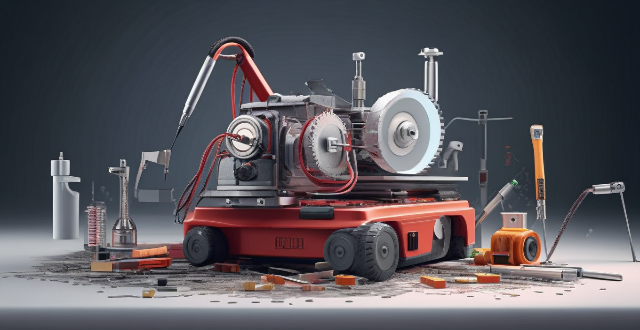
What are the benefits of using a digital tool for note-taking ?
The article discusses the advantages of using digital tools for note-taking, which include increased efficiency, improved learning and retention, environmental benefits, and collaboration opportunities. Digital notes can be taken quickly, organized easily, searched efficiently, and accessed from anywhere. They also offer visual aids, audio recordings, linking capabilities, and review options that enhance learning and retention. Additionally, digital note-taking reduces paper waste, energy consumption, and physical storage needs, contributing to a more sustainable environment. Finally, digital tools facilitate collaboration by allowing note sharing, real-time editing, version control, and feedback mechanisms. Overall, digital note-taking is an optimal choice for students, professionals, and anyone looking to optimize their note-taking experience.

What should be included in a basic emergency kit ?
A basic emergency kit should include essential items such as water, non-perishable food, a first aid kit, warm clothing and bedding, lighting and communication tools, a multipurpose tool, cash, personal documents, and a map. The contents may vary depending on the type of emergency and household size. It is important to regularly review and update the kit to ensure it remains effective.

What are some examples of cutting-edge technologies used in professional sports ?
Cutting-edge technologies have revolutionized professional sports, improving athlete performance, fan engagement, and operational efficiency. Wearable technology tracks health metrics, while VR/AR enhances training and fan experiences. Biometric data analysis optimizes physical condition, video analytics deepens game insights, AI transforms coaching, scouting, and fan interaction, and IoT devices improve facility management. These advancements promise continued innovation in the future of professional sports.

How do I propagate my indoor plants ?
Propagating indoor plants is a rewarding activity that allows you to expand your collection without spending much money. Here's a step-by-step guide on how to propagate your indoor plants: 1. Choose the right plant: Some common houseplants that are easy to propagate include pothos, succulents, snake plants, and spider plants. Make sure to choose a plant that is healthy and free from pests or diseases. 2. Gather your tools: You will need some basic tools for propagation, including sharp scissors or pruners, clean pots with drainage holes, potting soil, and possibly rooting hormone (depending on the plant). 3. Choose a method of propagation: There are several methods of propagation, including stem cuttings, leaf cuttings, division, and layering. The method you choose will depend on the type of plant you have. 4. Prepare your cuttings: Using sharp scissors or pruners, make clean cuts just below a node (the point where leaves attach to the stem) on your chosen plant. Remove any lower leaves that would be below the soil line as these can rot and cause problems later on. 5. Plant your cuttings: Fill your pots with fresh potting soil making sure there are drainage holes at the bottom. Make a small hole in the soil and insert your cutting about halfway down. Water gently to settle the soil around the cutting. 6. Provide proper care: Place your newly planted cuttings in a warm bright location but out of direct sunlight Keep the soil moist but not waterlogged Avoid letting it dry out completely You may also want to cover your pot with a plastic bag or dome to create a humid environment which helps promote root growth. 7. Be patient and observe growth It can take several weeks to months for your cuttings to develop roots and new growth Once you see new leaves forming you know that your plant has successfully rooted and is ready to continue growing independently. 8. Transplant if needed Once your plant has outgrown its current pot or seems rootbound it's time to transplant it into a larger container with fresh potting soil Be gentle when handling the delicate new roots during transplantation.

In what applications are DC brushed motors commonly used ?
DC brushed motors are utilized in various industries for diverse applications, including automotive functions such as windshield wipers and power windows, home appliances like vacuum cleaners and washing machines, industrial equipment including CNC machines and conveyor systems, consumer electronics such as computer cooling fans and hard drives, and tools & power tools like drills and saws. Their simple design, cost-effectiveness, and ease of control make them a reliable choice for these applications.
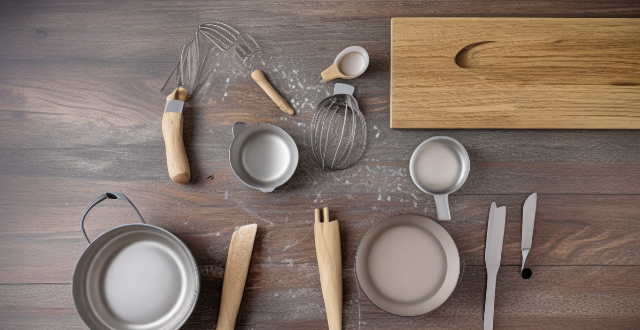
What are the best tools for baking that every kitchen should have ?
The essential baking tools for a kitchen include measuring cups and spoons, digital scales, mixing bowls of various materials, whisks, mixers, baking pans, oven mitts, thermometers, cooling racks, rolling pins, pastry cutters, cookie scoops, parchment paper, piping bags, offset spatulas, zesters, and dough punches. These tools ensure precise measurements, effective mixing, even baking, and easy handling of baked goods, contributing to successful and consistent baking outcomes.
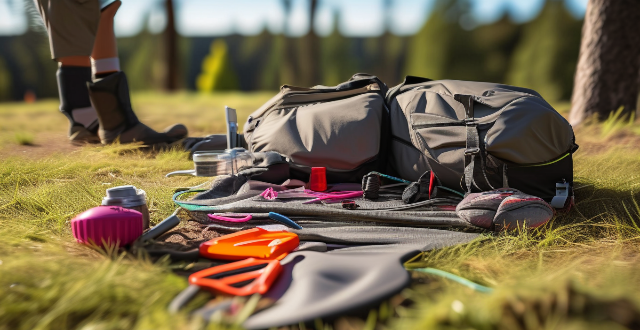
What are some essential sports equipment for outdoor activities like hiking and camping ?
When engaging in outdoor activities like hiking and camping, it is important to have the right sports equipment for safety, comfort, and enjoyment. Essential items include appropriate footwear such as hiking boots and waterproof socks, weather-appropriate clothing, backpacks and bags with dry bags or waterproof containers, sleeping gear like tents and sleeping bags, cooking and eating utensils, lighting and navigation tools, a first aid kit, and miscellaneous items such as multi-tools, sunscreen, and emergency signaling devices. Tailor your gear list to the specific needs of your adventure, check the weather forecast before heading out, and be prepared for any sudden changes in climate or terrain.

Can you provide advice on how to trim my cat's nails without hurting her ?
How to trim your cat's nails without hurting her: 1\. Get your cat comfortable with the process by gradually introducing nail trimming tools and positive experiences like treats or playtime. 2\. Choose a quiet, calm environment and a time when your cat is relaxed and calm. 3\. Use sharp, high-quality clippers or grinders designed specifically for cats, making sure the tool is clean and sanitized before use. 4\. Be gentle and patient, taking your time and working slowly while avoiding pulling or tugging at your cat's nails. 5\. Only cut the transparent part of the nail, avoiding the pink quick (the blood vessel) that runs through the nail. If you're unsure about where to cut, err on the side of caution and only trim a small amount at a time. 6\. Reward your cat with treats, praise, and affection after each successful nail trimming session to build positive associations with the process.

What tools do I need to start practicing advanced mixology ?
To start practicing advanced mixology, you will needTo start practicing advanced mixology, you will need equipment to ensure that you can you will need a variety of tools and equipment to ensure that you can create high-quality drinks with precision and consistency. The essential tools for advanced mixology include shakers, jiggers, strainers, mixing glasses, muddlers, bar spoons, fruit knives and cutting boards, bottle openers and corkscrews, ice buckets and tongs, pour spouts, and miscellaneous tools such as citrus peelers, channel knives, ice scoops, and juicers.

What are some common applications for AC stepping motors ?
AC stepping motors have a wide range of applications due to their precise control and high torque output. Here are some common uses: 1. Printers and Plotters: AC stepping motors are used in printers and plotters to move the print head or pen with precision, and they can control the speed of the print head or pen, allowing for variable printing speeds. 2. CNC Machines: In computer numerical control (CNC) machines, AC stepping motors are used to control the path of the cutting tool and adjust the feed rate of the tool, allowing for precise machining of parts. 3. Robotics: AC stepping motors are often used in robotic joints to provide precise movement and positioning, and they can control the force applied by the robot's end effector, allowing for delicate manipulation of objects. 4. Textile Industry: In textile machinery, AC stepping motors are used to feed fabric through the machine at a controlled rate and control the pattern being woven into the fabric by adjusting the position of the weaving elements. 5. Automation Systems: AC stepping motors are used to control the speed and direction of conveyor belts in automation systems, and they are often used as actuators in automated systems, providing precise control over the position and movement of components.

Can sports be used as a tool for soft power and influence in international politics ?
**Sports as a Tool for Soft Power and Influence in International Politics:** **Cultural Diplomacy:** Sports events offer platforms for countries to showcase their culture and history, fostering people-to-people exchanges that can lead to improved diplomatic relations. **Economic Impact:** Major sporting events can boost tourism and attract foreign investment, with infrastructure developments benefiting the host country's economy long-term. **Political Influence:** Sports diplomacy allows for informal discussions between politicians, symbolizing national strength and unity through successful hosting or victories. **Challenges and Limitations:** Considerations include resource allocation concerns, potential for political conflicts during events, and issues of commercialization affecting sports' role in soft power initiatives.

Can sports be a tool for personal growth and self-discovery ?
Sports offer numerous opportunities for personal growth and self-discovery, including building resilience and determination, developing teamwork and communication skills, enhancing self-discipline, promoting emotional health, discovering passion and purpose, and cultivating mindfulness and focus.

What software tools are available to help with budget creation ?
Budgeting is an essential aspect of financial planning, and there are several software tools available that can help with budget creation. Microsoft Excel, Google Sheets, Quicken, Mint, and YNAB are some of the most popular options. Each tool has its own set of features, pros, and cons that make it suitable for different types of users and budgeting needs.
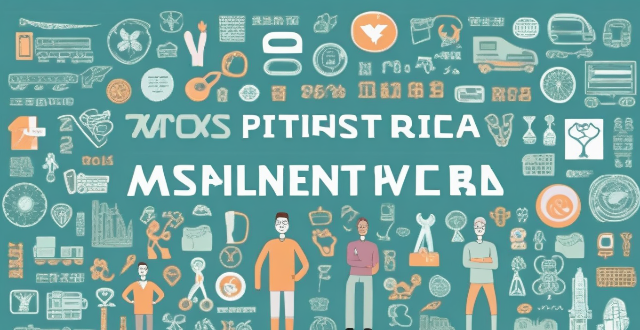
Can sports be used as a tool for social change and community development ?
This text discusses the potential of sports as a tool for social change and community development. It highlights how sports can break down barriers, promote health and well-being, and contribute to education and personal development. The article also explores how sports can address social issues, empower communities economically, and promote peace and reconciliation. However, it emphasizes the need for equitable resource allocation, accessibility, and sustainability to fully realize the potential of sports in societal transformation.

What are some tips for cleaning hard-to-reach areas in my home ?
Cleaning hard-to-reach areas in your home can be challenging, but with the right tools and techniques, it becomes more manageable. Use extendable dusters, flexible brushes, and long-handled tools for better access. Be creative with vacuum attachments, steam cleaners, and magnetic sweepers to simplify the process. Remember safety by using non-slip step stools and wearing gloves. Regular cleaning schedules and making cleaning fun can help maintain these areas.

Are there any tools to help diagnose network latency issues ?
Network latency issues can be frustrating and detrimental to the performance of applications and services. Fortunately, there are several tools available that can help diagnose and troubleshoot these issues. Some popular tools used for network latency diagnosis include Ping, Traceroute, MTR (My Traceroute), Netstat, Tcpdump, and Wireshark. Each tool has its own strengths and weaknesses, so it's important to choose the right one based on your specific needs and circumstances. By using these tools effectively, you can identify and resolve latency problems quickly and efficiently.

Are there any apps or tools designed to improve focus and productivity ?
In today's fast-paced world, staying focused and productive is crucial for success. With the plethora of distractions around us, it's essential to have tools that can help us stay on track. In this article, we will discuss some apps and tools designed to improve focus and productivity.

Can sports be used as a tool for breaking down social barriers and promoting equality ?
The power of sports to bring people together and foster a sense of community is undeniable. However, the question remains: can sports be effectively utilized as a tool for breaking down social barriers and promoting equality? Sports organizations are increasingly recognizing the importance of diversity both on the field and off. By actively recruiting athletes from different backgrounds, sports can serve as a visible symbol of inclusion. Through exposure to diverse teams and athletes, sports can help dispel stereotypes and prejudices, encouraging fans and participants alike to appreciate the unique talents and contributions of individuals regardless of their background. Participation in sports teaches valuable life skills such as teamwork, discipline, and perseverance, which can be instrumental in overcoming social barriers. Success in sports can empower individuals, particularly women and minorities, by providing a platform for them to showcase their abilities and achieve recognition. Major sporting events can stimulate local economies by creating jobs and promoting tourism. Investments in sports facilities can revitalize neglected areas, providing much-needed resources and encouraging further development. Grassroots sports programs can engage community members, fostering a sense of belonging and pride that extends beyond the playing field. Unequal distribution of resources can hinder the ability of some communities to fully participate in sports. Physical accessibility for athletes with disabilities remains a crucial issue that needs to be addressed comprehensively. Ensuring equal opportunities and treatment for female athletes continues to be a focal point in the fight for equality in sports. Efforts to promote diversity must be genuine and avoid tokenism, ensuring that all participants feel valued and respected. Organizations must continuously assess their progress toward inclusivity and make necessary adjustments to maintain effectiveness. Educating stakeholders about the importance of inclusivity and equity is essential for maintaining momentum and driving change.

What are the best software tools for creating mind maps ?
Best Software Tools for Creating Mind Maps Mind maps are an excellent way to visually organize information, ideas, and thoughts. They help in brainstorming, planning, and problem-solving. There are several software tools available that make it easy to create mind maps. Here are some of the best ones: 1. XMind is a powerful mind mapping tool that offers a range of features to create professional-looking mind maps. It has a user-friendly interface and supports various chart types, including tree, logic, and matrix. XMind also allows you to import and export data in different formats, making it easy to share your work with others. 2. MindMeister is an online mind mapping tool that lets you create mind maps directly in your browser. It offers real-time collaboration, allowing multiple users to work on the same mind map simultaneously. MindMeister also integrates with popular apps like Google Drive and Dropbox, making it easy to save and share your work. 3. Coggle is another online mind mapping tool that offers a simple and intuitive interface. It allows you to create beautiful mind maps with images, links, and notes. Coggle also supports collaboration, letting you invite team members to work on the same mind map together. 4. FreeMind is a free, open-source mind mapping tool that offers basic functionality for creating mind maps. It has a clean and straightforward interface, making it easy to get started with mind mapping. FreeMind also allows you to export your mind maps in various formats, including HTML and PDF. 5. iMindMap is a comprehensive mind mapping tool that offers a wide range of features for creating visually stunning mind maps. It has a unique "radial" view that makes it easy to focus on specific areas of your mind map. iMindMap also supports multimedia elements, such as images and audio files, making it an excellent tool for creative projects.
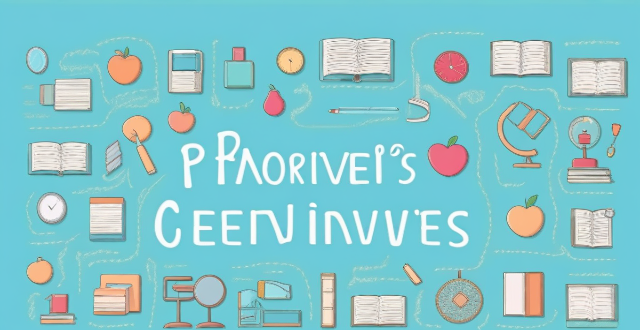
How can I improve my study habits to increase my learning efficiency ?
The text provides a comprehensive guide on how to improve study habits for higher learning efficiency. It suggests developing a consistent study schedule, creating an optimal study environment, using active learning techniques, breaking down study material, employing time management tools, setting clear goals, taking care of oneself, utilizing teaching as a learning tool, seeking help when needed, and reflecting on one's study methods. These strategies aim to enhance focus, concentration, memory retention, understanding, energy, interest, objectives, progress, brain rest, nourishment, knowledge reinforcement, assistance, perspectives, engagement, effectiveness evaluation, and approach adaptation. Consistency and self-reflection are emphasized as key factors in continuous improvement of academic performance.

Can mind mapping be effectively used in business settings ?
Mind mapping is a visual tool that can be effectively used in business settings to enhance productivity, creativity, and communication. It helps individuals and teams organize information, generate ideas, and solve problems by creating a structured diagram of related concepts. The benefits of mind mapping in business include improved organization, enhanced creativity, increased productivity, and better communication. To implement mind mapping in business, one should choose the right tool, train their team, integrate it into processes, encourage collaboration, and continuously evaluate its effectiveness.